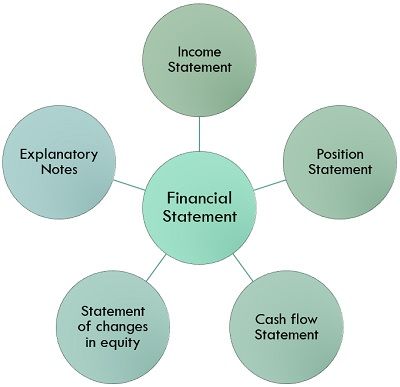Definition: Financial Statement are systematically maintained, written summary of all the ledger account heads, exhibited in a way that it provides a clear view of the financial position, profitability and performance of the enterprise.
These are prepared at the end of the accounting period, which is usually one year, after that it is audited by the auditor, to check their accuracy, transparency and fairness, for taxation and investment purposes.
Objectives of preparing financial statement
The objectives of the financial statement are as under:
- To ascertain the financial position, profitability and performance.
- To determine the cash inflows and outflows.
- To know the results of business operations.
- To provide information related to financial resources and obligations of the concern.
- To disclose the accounting policies.
- To check the efficiency and effectiveness of the company’s management.
A financial statement is a primary source of information to stakeholders to know the profit earned or loss sustained by the enterprise during a particular period and its financial status at the end of that particular period, which will assist in the rational decision making.
Components of Financial Statement
A financial statement is a combination of five major statements, as shown in the figure below:
Income Statement or Trading and Profit & Loss Account
The profit earned or loss sustained by the enterprise during an accounting period can be ascertained by the preparation of the income statement. The profit/loss is calculated at two levels, i.e. gross profit and net profit. The gross profit is nothing but the variance in the selling price and cost of goods sold, which is measured by preparing a trading account.
On the other hand, net profit can be calculated by preparing a profit and loss account. The profit and loss account is a summary of the company’s revenues and expenses and reflects the outcome of the company’s operations for the specified period.
Position Statement or Balance Sheet
A Balance Sheet can be understood as a snapshot indicating the company’s obligations and resources, i.e. liabilities and assets, at a specified date.
Although a single transaction, can make a huge difference in the overall picture of the company’s position, the balance sheet is correct at a specific point of time. And only because of this very reason, we use the word ‘as at’ along with the date. That is why it is called a position statement.
Cash Flow statement
Cash flow statement is a summary of company cash sources and applications. It ascertains the firm’s effectiveness in generating cash to pay off its obligations, funding the operations and investment activities.
The cash flow statement reflects the changes in the company’s cash and cash equivalents, i.e. commercial paper, certificate of deposit, treasury bills, marketable securities, short term government bonds, etc. between two accounting period.
Statement of changes in equity (if applicable)
It is a statement that indicates the changes in the company’s share capital, retained earnings and reserves over the accounting period, i.e. it reconciles the equity balances at the beginning with the balances at the end.
Explanatory notes
Otherwise called as notes to accounts, these are supporting notes annexed to any of the above statements. It provides additional information about the company’s operations and finance.
Simply put, the financial statement is nothing but a basic formal annual report that helps the company to conveys the financial information to the interested parties such as owners. investors, employees, government, tax authorities and so forth.


Li says
Very clear explanation, thank you. Kindly share the author’s name and publication date for future referencing.